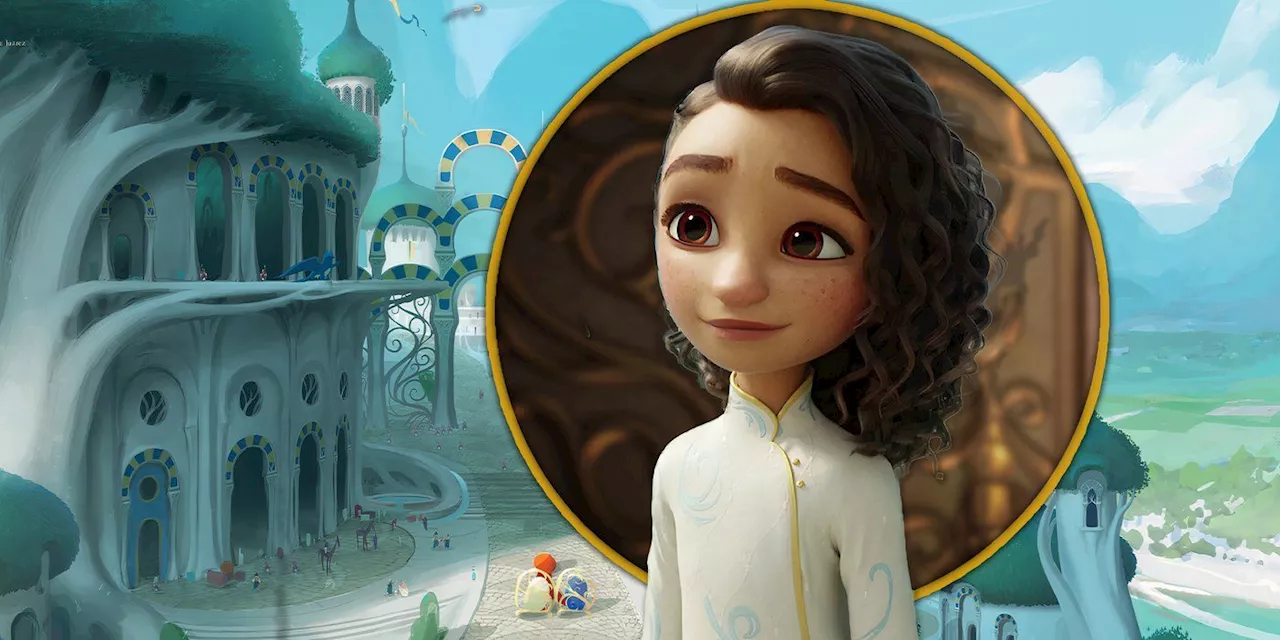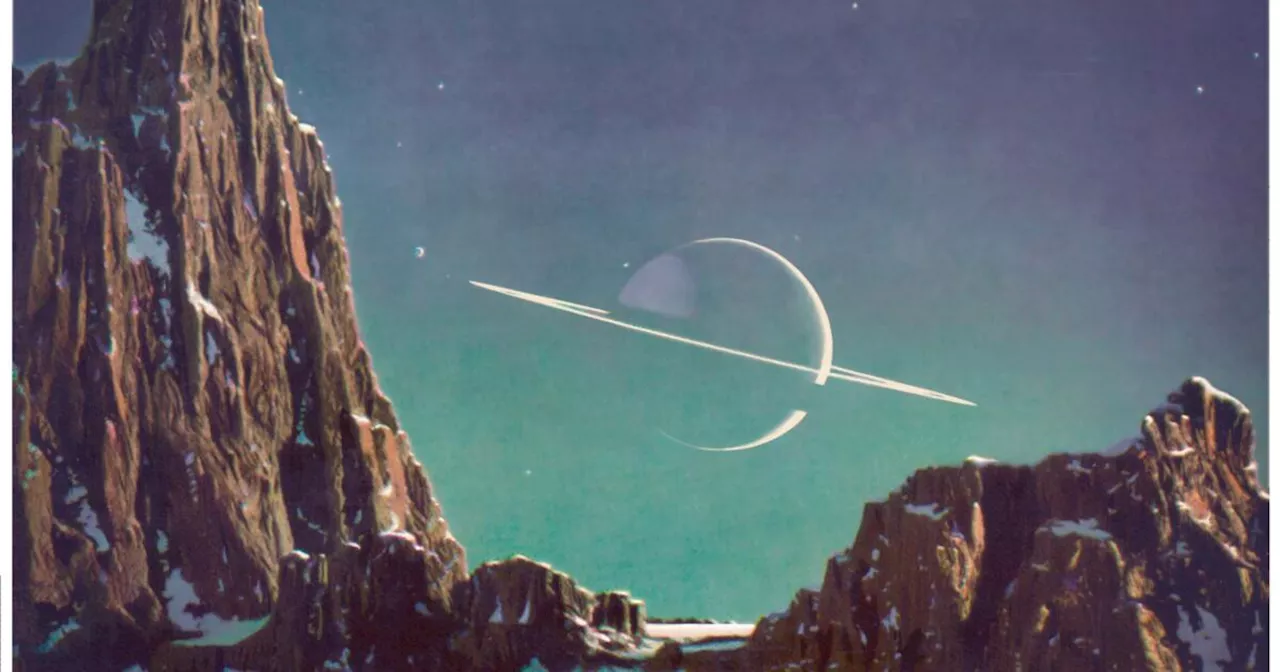Twenty years after the Huygens probe unveiled the true face of Saturn's moon Titan, we reflect on the clash between Chesley Bonestell's artistic vision and the data-driven reality. This piece explores the history of space exploration, the enduring power of imagination, and the profound impact of scientific discovery on our understanding of the cosmos.
Twenty years ago today, I watched TV coverage of a probe descending toward the surface of Titan , a moon of Saturn , while outside my home in Utah snow dusted a rocky mountain outcrop I’d nicknamed Titan — both after the moon and a painting of it. When the probe — named Huygens, for the 17th century Dutch astronomer Christiaan Huygens who discovered that world — transmitted its first pictures, the painted moonscape clashed with the real one.
Chesley Bonestell’s “Saturn as Seen From Titan,” appeared with other planetary scenes in Life magazine, showing what were then considered to be astronomically accurate views of the solar system for the first time. An architectural illustrator and Hollywood matte painter, Bonestell would make a career of space art. His work inspired the very scientists whose research would render many of his paintings factually obsolete. The Titan illustration is his most famous space scene. In it, Saturn hangs over windswept snow and brown cliffs and outcroppings. The crags frame a glowing Saturn, floating huge, rings nearly edge-on, like a giant’s belt-buckle. Part of the planet is shadowed, blending into the cobalt-turquoise sky. The whole of it is weirdly grand. What the Huygens probe revealed — a hazy, frigid, dusky-orange world — and what the ethereal painting promised could not be more different. Released from NASA’s Cassini spacecraft, the Huygens probe descended by parachute for some 2.5 hours before surviving its landing. The European Space Agency craft remains humans’ farthest footfall, some 750 million miles away from Earth. With a thick nitrogen-methane atmosphere, Titan’s sky is choked with organic compounds, dust and aerosols. This is a world of hydrocarbon seas and vistas of sand and icy rocks. The cold — minus-274 degrees Fahrenheit — is perhaps the only commonality with Bonestell’s view. (The real Titan may not be as romantic as Bonestell’s, but it is promising: In three years NASA’s Dragonfly mission will send a helicopter to explore Titan’s habitability for life.) The Huygens-Bonestell discrepancy wasn't the first time that our visions of the solar system were upended by data. Space exploration is, after all, a form of “ground-truthing.” When spacecraft first reached Mars in the 1960s, the notion of canals built by Martians had to be discarded, though later images would show clear evidence of surface water. The sci-fi jungles of Venus pictured in pulp magazines? Probes showed instead a dense atmosphere and hellish-hot surface. Our own moon’s mountains, long portrayed as sharp and alpine, are instead muscular and rounded. Yet our obsolete visions retain value. In 1944, Bonestell’s illustration offered a compelling answer to the question, “Why explore space?” And even now, knowing it’s far from accurate, the painting’s faint path of light leads us between the cliffs and toward Saturn with this message: If we stay only where we are, then knowledge does too, in or near the frigid lavender of shadows. Bonestell’s informed-but-imagined solar system evokes the sublime, the sense of being small then empowered in the face of the grand. The scientists who built the Huygens probe that made Titan real were, in their way, doing the same. Both endeavors are examples of the rigors of curiosity born from awe. This is not, as critics of space exploration suggest, a form of belittling or ignoring our terrestrial challenges. Quite the opposite. The sublime strengthens our bonds with the cosmos and all it signifies: beauty and dread, imagination and fact, the thrill of discovery and fear of the unknown. Painted or transmitted, other worlds can fire the imagination and at the same time underline the value of the one we inhabit. That mountain outcrop I still think of as Titan reminds me of the painting, the probe, space “out there” and the space I occupy right here on Earth
Space Exploration Titan Saturn Chesley Bonestell Huygens Probe Space Art Science And Imagination Scientific Discovery
United States Latest News, United States Headlines
Similar News:You can also read news stories similar to this one that we have collected from other news sources.
 'Attack on Titan: The Last Attack' Theatrical Release Dates RevealedArmin attaches himself to the Colossal Titan in Attack on Titan
'Attack on Titan: The Last Attack' Theatrical Release Dates RevealedArmin attaches himself to the Colossal Titan in Attack on Titan
Read more »
 Vinne's Anime-Inspired Art Takes Center Stage in New Art BookA new hardcover art book showcases the dynamic and influential artwork of South American artist Vinne, featuring illustrations spanning from 2018 to 2024.
Vinne's Anime-Inspired Art Takes Center Stage in New Art BookA new hardcover art book showcases the dynamic and influential artwork of South American artist Vinne, featuring illustrations spanning from 2018 to 2024.
Read more »
 Mastering Latte Art: The Art of PouringThis article provides a step-by-step guide on how to create beautiful latte art by explaining the fluid dynamics of pouring steamed milk onto espresso.
Mastering Latte Art: The Art of PouringThis article provides a step-by-step guide on how to create beautiful latte art by explaining the fluid dynamics of pouring steamed milk onto espresso.
Read more »
 Check Out The Making Of Princess Ellian & Other Concept Art From The Art & Making Of SpellboundCheck Out The Making Of Princess Ellian & Other Concept Art From The Art & Making Of Spellbound
Check Out The Making Of Princess Ellian & Other Concept Art From The Art & Making Of SpellboundCheck Out The Making Of Princess Ellian & Other Concept Art From The Art & Making Of Spellbound
Read more »
 Delta Airlines Blends Art and Travel at Miami Art CelebrationDelta Airlines hosted a unique event at the House of Robb pop-up during Miami’s art celebration, showcasing their premium offerings and celebrating the city’s artistic expression.
Delta Airlines Blends Art and Travel at Miami Art CelebrationDelta Airlines hosted a unique event at the House of Robb pop-up during Miami’s art celebration, showcasing their premium offerings and celebrating the city’s artistic expression.
Read more »
 SCOPE Art Show Celebrates Interdependence of Art and CreativityThe SCOPE Art Show in Miami Beach, Florida, focused on the theme of interdependence, showcasing contemporary art and celebrating the collaborative nature of the art world.
SCOPE Art Show Celebrates Interdependence of Art and CreativityThe SCOPE Art Show in Miami Beach, Florida, focused on the theme of interdependence, showcasing contemporary art and celebrating the collaborative nature of the art world.
Read more »
